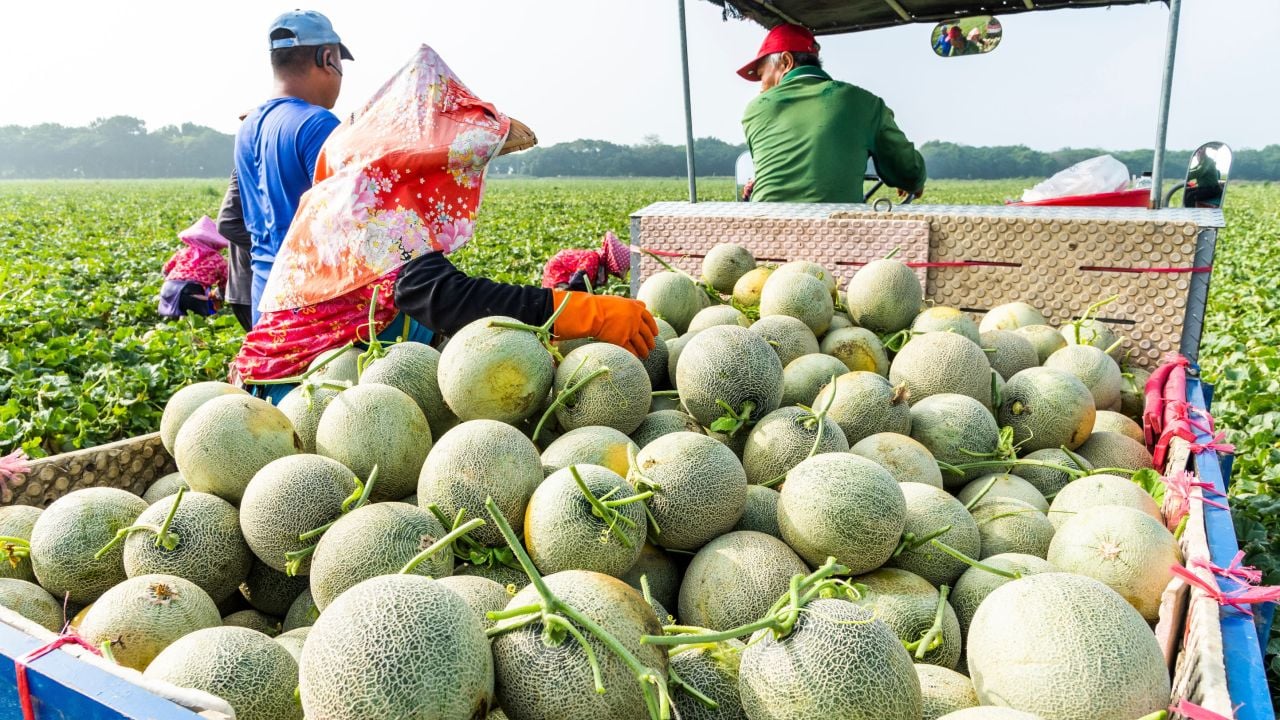
A salmonella outbreak from contaminated cantaloupes produced in Mexico has garnered headlines – eight people have died, 3 in the U.S. and 5 in Canada, at least 45 hospitalized and many others sickened. But many of the U.S. farms where cantaloupes are grown could have a potential risk of contamination, as an EWG analysis finds they are located near factory farms where dairy cows, cattle and poultry are raised.
Given the quantities of manure produced by these animal feeding operations, their proximity to cantaloupe crop fields is unappetizing and potentially unhealthy.
Roughly 40 percent of the nation’s cantaloupes are grown in three California counties – Fresno, Imperial and Merced. Other major cantaloupe-growing regions in the U.S. include Monterey County, also in California, and Pinal County, in Arizona.
Using publicly available data, EWG geospatial analysts mapped the locations of cantaloupe farms in Fresno, Imperial and Merced counties and their distance from industrial livestock operations. (See Methodology for details.) The counties are home to 509 dairy, cattle and poultry animal feeding operations. Two hundred and fifteen fields, with 9,850 cantaloupe acres, lie within a 3-mile buffer zone of these facilities.
Click below for interactive map:

Animal waste from concentrated animal feeding operations, or CAFOs, that raise dairy cows or cattle can contaminate irrigation water sprayed on crops, including cantaloupes, that are ultimately eaten without being cooked. Farmers are not required to test their irrigation water before spraying it on crops, including cantaloupes.
One field in Mercer County is only five feet from an animal operation, so animal waste could very well seep into the irrigation water and get sprayed onto cantaloupe fields, or drift from the animal operation on dust to contaminate nearby fields. (See image below.)
Inadequate regulation
Congress directed the Food and Drug Administration to develop standards for water sprayed on crops.
The rule the FDA first issued, in 2015, required enforceable periodic testing for contaminated irrigation water. But a revised rule, proposed in 2022, abandoned the requirement by allowing farms instead to decide whether to include tests in their “water assessments.”
The risk of contamination to food grown in the U.S. will continue unless farmers face more stringent regulations to conduct tests of their water, management of manure from industrial agriculture is more rigorously monitored, and the FDA enforces its regulations more aggressively.
Methodology
For this analysis, EWG identified cantaloupe fields within a 3-mile buffer of an animal feeding operation in Fresno, Imperial and Merced counties. The locations of the 509 animal feeding operations were provided by the California State Water Resources Control Board, and a 3-mile buffer was placed around each animal facility.
We overlaid these buffer zones with a footprint of all fields used to grow cantaloupe in the three counties, provided by the U.S. Department of Agriculture’s Cropland Data Layer, or CDL.
EWG included in the analysis all fields the USDA says are used to grow cantaloupe, except for the smallest fields. We removed CDL fields smaller than 1.1 acres, because these may be falsely categorized as cantaloupe.

